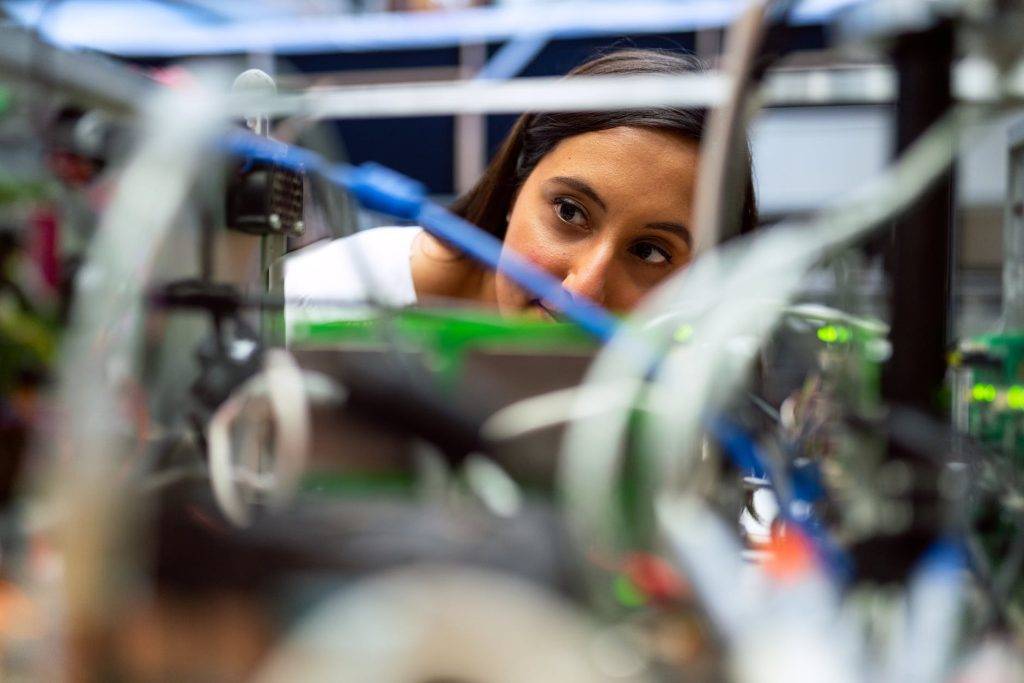I. Introduction
Virtual reality (VR) is no longer just a concept from science fiction movies; it is becoming a reality in today’s classrooms. According to a recent study, 87% of teachers believe that VR would positively impact student engagement. The potential impact of VR in education is enormous, and it’s important to understand the benefits and challenges of this emerging technology.
B. Thesis Statement In this blog post, we will explore the potential impact of VR on the future of education. We will discuss how VR can enhance the learning experience for students and provide teachers with new opportunities to engage their students. We will also examine the potential challenges of implementing VR in the classroom and ways to overcome them.
C. Overview of the importance of the topic The future of education is closely tied to technology, and VR is a technology that is rapidly gaining popularity in the education field. As students become more tech-savvy, exploring new and innovative ways of delivering education is essential to capture their attention and improve their learning outcomes. The potential of VR to immerse students in different learning environments and enhance their understanding of complex concepts is immense, and this technology can provide educators with powerful tools to transform their classrooms.
II. The Basics of Virtual Reality in Education
A. Defining Virtual Reality in Education
Virtual Reality (VR) refers to a technology that creates a simulated environment that can be experienced through sight, sound, and touch. In education, VR is used to create an immersive learning experience that allows students to interact with educational content in a virtual world. With VR, students can explore topics that are difficult to visualize in real life, such as microscopic organisms or ancient civilizations.
B. Types of Virtual Reality Technologies
There are several types of VR technologies that are used in education, including:
C. Examples of VR in Education
VR has already begun to revolutionize the way students learn in the classroom. Here are some examples of how VR is currently being used in education:
Incorporating VR into education can help students develop critical thinking, problem-solving, and collaboration skills while providing a unique and engaging learning experience.
III. The Benefits of Virtual Reality in Education
A. Increased Engagement and Interest Virtual Reality (VR) in education can provide a unique and exciting experience for students that can increase engagement and interest in learning. By immersing students in a 3D environment, they can explore and interact with content in a way that is not possible with traditional teaching methods. This engagement can lead to increased motivation and ultimately better learning outcomes.
B. Enhanced Learning Experiences One of the key benefits of VR in education is the ability to provide students with enhanced learning experiences. Through VR, students can explore different environments, perspectives, and scenarios that they may not have access to otherwise. For example, a history lesson on the ancient ruins of Pompeii can be brought to life through a virtual tour, allowing students to explore the ruins and experience what life was like during that time period. This type of immersive experience can deepen students’ understanding and appreciation of the content.
C. Improved Retention and Recall VR can help students better retain and recall information by immersing them in the learning experience. This is because VR can create vivid and memorable experiences that are more likely to be retained in students’ long-term memory. For example, a student learning about the human body can use a VR headset to explore and interact with a 3D model of the body, allowing them to better understand the different systems and functions.
IV. The Future of VR in Education A. Advancements in VR Technology As technology continues to advance, the potential uses of VR in education are limitless. New devices and software are being developed that can provide even more immersive and interactive experiences for students.
B. Accessibility of VR Technology While VR technology is still relatively new and expensive, it is becoming more accessible to schools and educators. As the technology becomes more widespread, it is likely that VR will become a more common tool in classrooms.
C. Integration with Other Technologies VR technology can also be integrated with other technologies such as artificial intelligence and gamification, providing even more opportunities for personalized and engaging learning experiences.
IV. The Challenges of Virtual Reality in Education
Virtual Reality (VR) has the potential to transform education and revolutionize the way we learn. However, as with any new technology, there are challenges to be addressed. In this section, we will discuss some of the challenges that need to be overcome for VR to be effectively integrated into education.
A. Accessibility and Equity
One of the main challenges facing the implementation of VR in education is accessibility and equity. While VR technology has become more affordable in recent years, it is still relatively expensive compared to traditional educational resources. Schools with limited budgets may struggle to afford the necessary equipment to provide VR experiences to their students. Additionally, students in low-income areas may not have access to the internet speeds required to use VR effectively, leading to a digital divide in education.
B. Integration with Curriculum
Another challenge of integrating VR into education is ensuring that it aligns with learning goals and curriculum. It is essential to develop VR experiences that are purposeful and align with the learning objectives of the curriculum. Otherwise, it risks becoming a novelty or a distraction from learning.
C. Ethical Concerns
The use of VR in education also raises ethical concerns. For example, students’ privacy and safety need to be considered carefully. In addition, there may be concerns around the accuracy of the information presented in VR experiences, particularly in subjects like history and science. Educators need to ensure that the content presented is accurate and unbiased.
V. The Future of VR in Education
A. Advancements in VR Technology
Virtual reality technology is rapidly evolving, and the advancements in the field are likely to impact education in the coming years. Some of the latest developments in VR technology that are expected to have a significant impact on education include:
B. Potential Impact on Education
The potential impact of VR on education is significant. Some of the potential benefits of using VR in education include:
C. Preparation for the Future
As VR technology continues to evolve and impact education, it is important for educators to be prepared for the future. Some ways that educators can prepare include:
VI. Conclusion
A. Restate thesis In conclusion, virtual reality has the potential to revolutionize education by increasing student engagement, providing enhanced learning experiences, and improving retention and recall. However, there are also challenges surrounding accessibility, integration with the curriculum, and ethical concerns that must be addressed. The future of VR in education is promising, with advancements in technology likely to impact the way students learn and engage with information.
B. Final Thoughts The use of VR in education is still in its early stages, but its potential impact is vast. As technology continues to advance, it is important for educators to consider how VR can be integrated into the curriculum to enhance student learning. While there are challenges to overcome, such as accessibility and ethical concerns, the benefits of VR in education make it a topic worth exploring further.
C. Call to Action We encourage educators to continue exploring the topic of VR in education and to consider attending professional development workshops to gain a deeper understanding of its potential impact on their classrooms. Share your thoughts and experiences with us on social media and join the conversation about how we can use technology to transform education for the better. Together, we can prepare students for the future by providing them with the tools they need to succeed.


